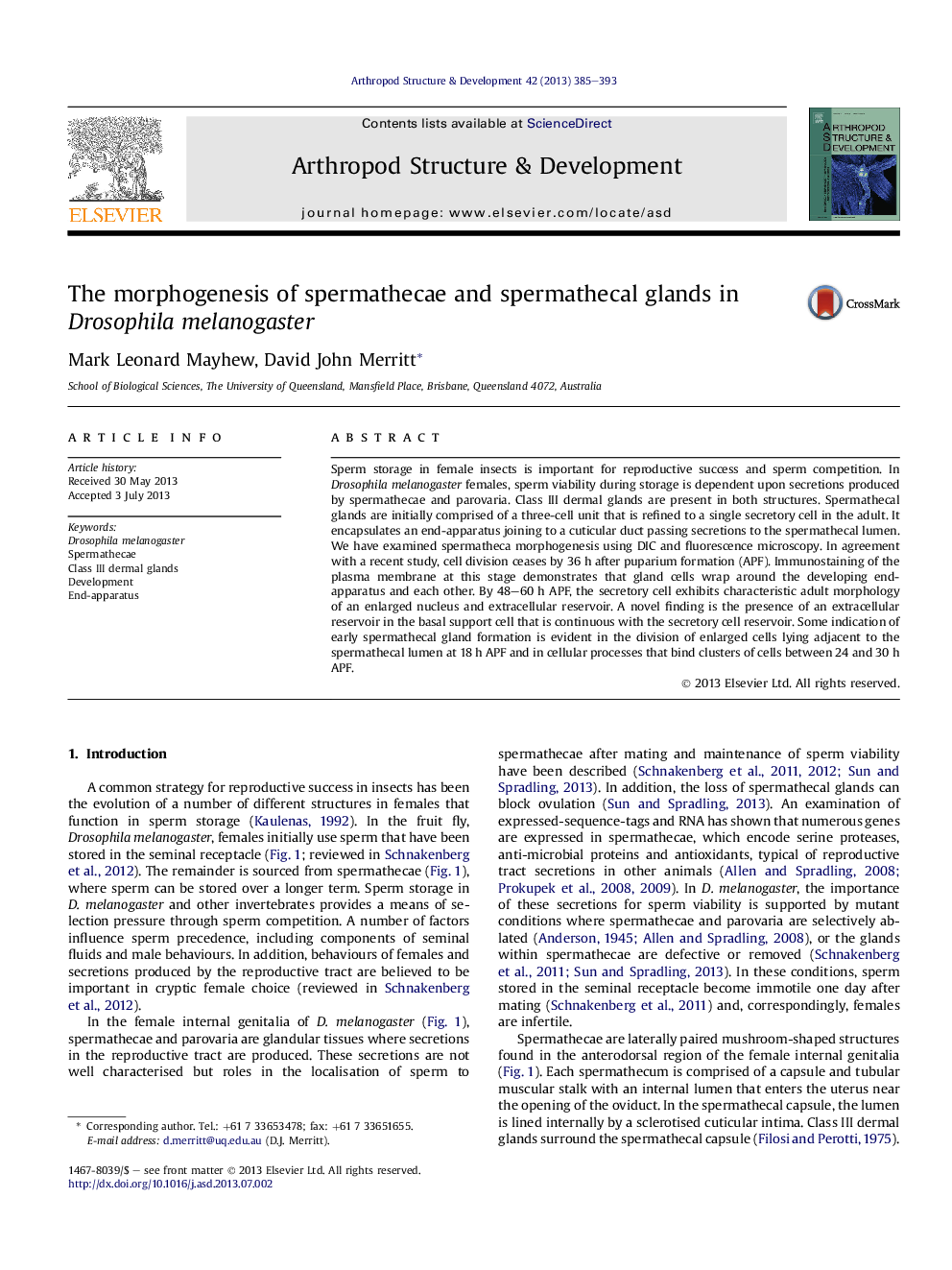| Article ID | Journal | Published Year | Pages | File Type |
|---|---|---|---|---|
| 2778720 | Arthropod Structure & Development | 2013 | 9 Pages |
•Analysis of spermathecae development using DIC, confocal and electron microscopy.•Confirmation of previous work on spermathecal gland development.•Cellular processes bind cells of each gland unit during early-to-mid pupation.•Plasma membrane of gland cells display onion-skin wrapping around end-apparatus.•Basal cells possess an extracellular reservoir that is continuous with the terminal gland cell.
Sperm storage in female insects is important for reproductive success and sperm competition. In Drosophila melanogaster females, sperm viability during storage is dependent upon secretions produced by spermathecae and parovaria. Class III dermal glands are present in both structures. Spermathecal glands are initially comprised of a three-cell unit that is refined to a single secretory cell in the adult. It encapsulates an end-apparatus joining to a cuticular duct passing secretions to the spermathecal lumen. We have examined spermatheca morphogenesis using DIC and fluorescence microscopy. In agreement with a recent study, cell division ceases by 36 h after puparium formation (APF). Immunostaining of the plasma membrane at this stage demonstrates that gland cells wrap around the developing end-apparatus and each other. By 48–60 h APF, the secretory cell exhibits characteristic adult morphology of an enlarged nucleus and extracellular reservoir. A novel finding is the presence of an extracellular reservoir in the basal support cell that is continuous with the secretory cell reservoir. Some indication of early spermathecal gland formation is evident in the division of enlarged cells lying adjacent to the spermathecal lumen at 18 h APF and in cellular processes that bind clusters of cells between 24 and 30 h APF.
Graphical abstractFigure optionsDownload full-size imageDownload as PowerPoint slide
